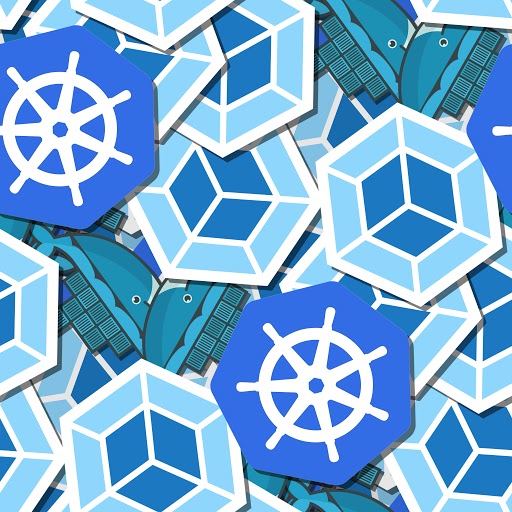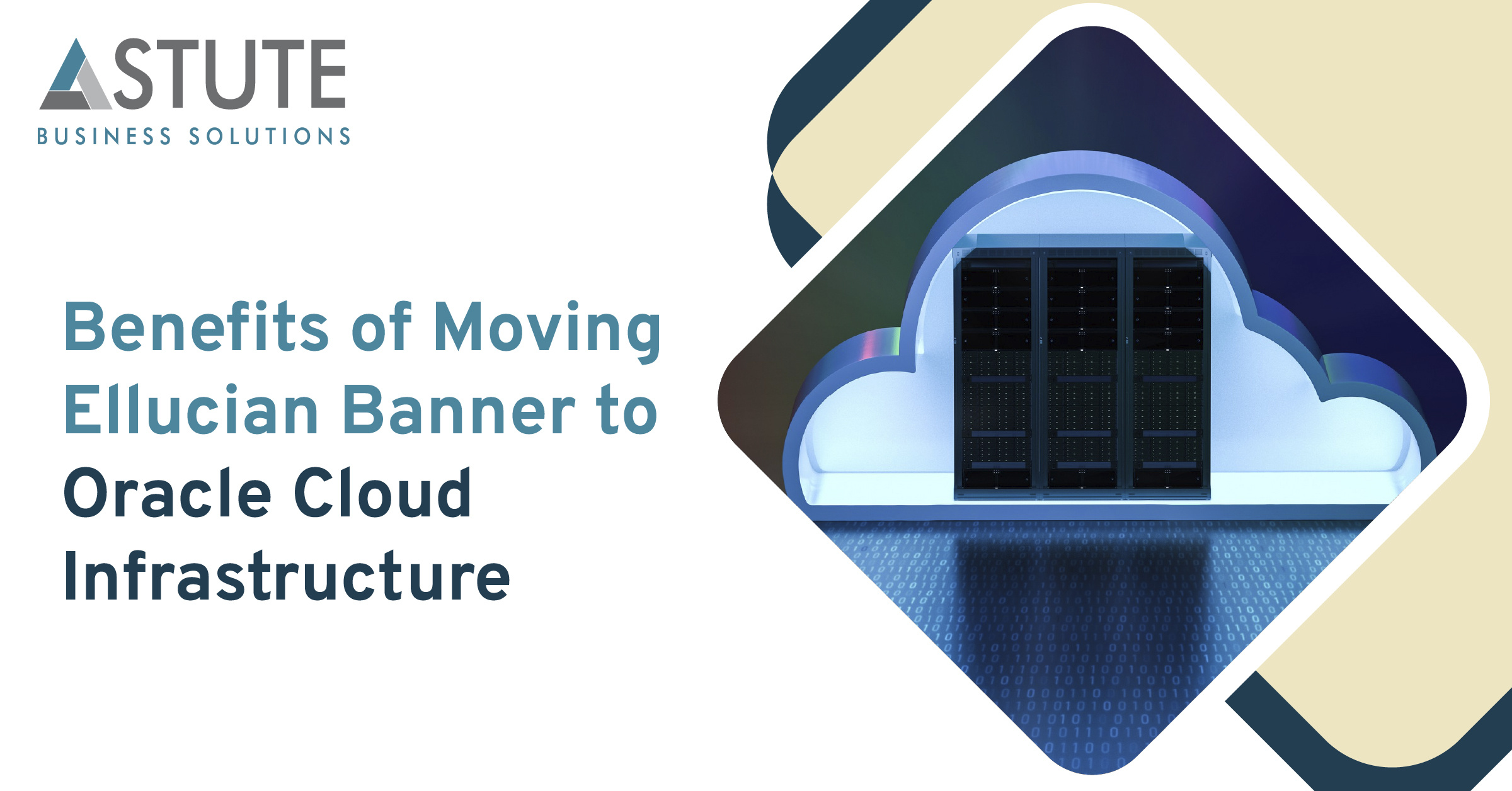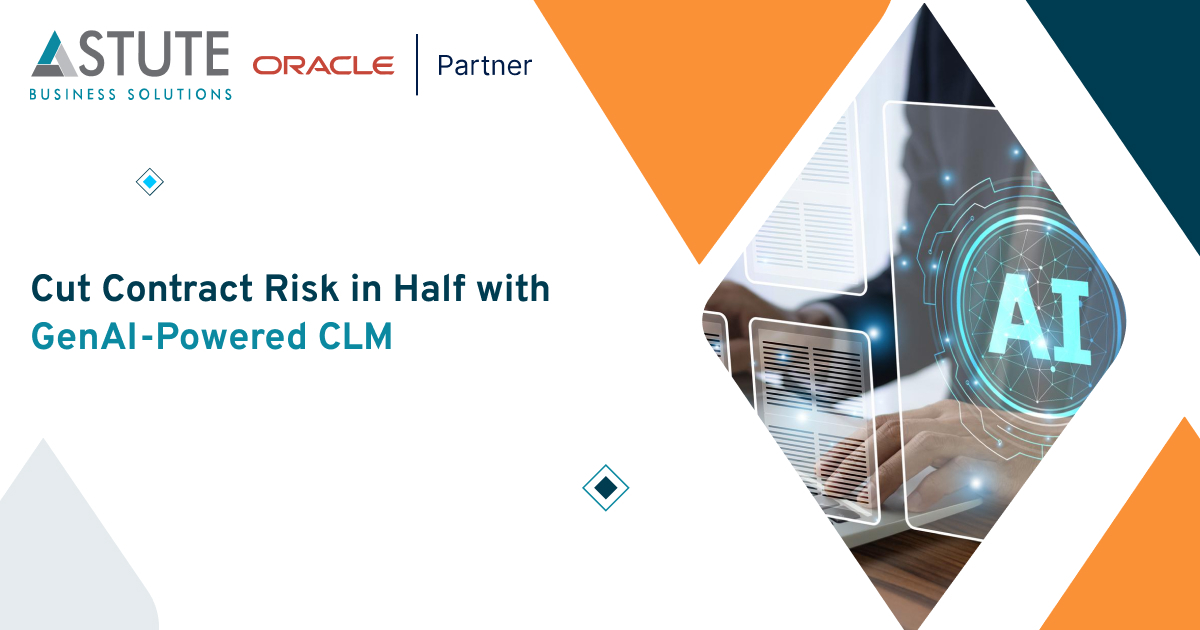Should I Containerize My Ellucian Banner Environment?

Table of Contents
Should I containerize my Ellucian Banner environment? This is a question that is coming up more and more as we engage with Ellucian Banner customers interested in learning more about saving money by hosting their Ellucian Banner infrastructure on Oracle Cloud Infrastructure. Sometimes, the customer is technically savvy and knows what a container is. Other times, not so much; either way, they are looking for a second (or third) opinion about why (or why not, as I will argue) their organization should heed the white papers coming out of conferences about all of the benefits the school down the road is reaping because they took the time and spent the money to containerize their banner environment.
Get professional Ellucian Banner Services
Enhance business operations with Astute.
For the uninitiated, containerization is a form of operating-system-level virtualization technology made famous in 2013 by Docker. Once containers became popular, it was quickly discovered that people needed a way to manage them holistically; thus, Kubernetes was born of Google in 2014, now maintained by the Cloud Native Computing Foundation and the defacto standard for container orchestration. The idea is that just as shipping containers can be easily docked to cargo ships, train beds, and 18-wheel-tractor-trailers, developers could create code in pluggable containers that could easily be moved from one environment to another to be ‘plugged-in’ in the same way without the need of carrying around much of the lower-level operating-system code. This approach makes application development faster as there is less code to compile and more predictable as there are fewer changing parts between systems.
With containerized infrastructure, new approaches to application development were introduced, bringing concepts of object orientation and separation of concerns to the infrastructure level with the idea of micro-services, which are intended to enable rapid, frequent, and reliable delivery of large, complex applications by delivering many small highly maintainable and automatically testable, loosely coupled, independently deployable pieces of code. When implemented correctly, this architecture provides a stable platform and process that allows for reliable and repeatable testing and validation, and automated deployment of system at any time with zero downtime.
Now, with a decent explanation and understanding of containers, we can come back to the customer question should you containerize your Ellucian Banner environment? It is my opinion that you should not. Here’s a table that describes several high-level opportunities and challenges for containerization with legacy applications.
Handling Flexibility
Ease of Management
Containerization with Legacy Applications
Opportunities |
Challenges |
|
Consistent Runtime Environment |
Knowledge Required to Manage |
|
Application Sandboxing |
Skill Required to Package |
|
Portability |
Conformation to Existing Governance |
|
Efficiency |
Conformation to Existing Security |
|
Resilience |
Traditional Vendor Support |
|
Scalability |
Traditional License Structures |
|
Agility |
Traditional Code/Application Methodologies |
|
Startup and Deployment Speed |
|
Put simply, Ellucian Banner wasn’t architected for containers. Of the reasons that an organization might want to containerize their Banner footprint, most of the time, there will likely be a better solution that is more obvious.
Suppose you are moving to Oracle Cloud Infrastructure, and you are concerned about having adequate service resiliency and redundancy. In that case, you can take advantage of cloud-native availability domains to ensure you have the right redundancy and run your database with real application clusters across availability domains. You can also be set up with a disaster recovery instance with a 1hr/4hr RPO/RTO located in another cloud region. Suppose your concern is about the need to have flexible computing to handle increased computing needs, such as registration or finals. In that case, you can build out instance pools that can be allocated to the load balancer and turned on with automation whenever you need them. Suppose you need real flexibility for your database in the same way. In that case, you have access to Exadata cloud service, which allows you to set predefined rules by which the database environment will automatically scale. These cloud-native solutions will often be less expensive, easier to manage, and more intuitive than re-architecting your entire environment to containers.
While containers have a nifty solution for all of these things, and there are some charming cloud container offerings that could be utilized (we will save OKE for another day), not just for Ellucian Banner, but really for any legacy ERP, the business case for containerization just isn’t there - especially for commercial off the shelf software (COTS). In our specific case, the containerization of Ellucian Banner, should be a strong example where just because you can, doesn’t mean you should.
Astute Business Solutions has a complete Ellucian Banner practice. That means that we can help you with anything and everything in your Ellucian Banner environment, from the infrastructure and technology, all the way up the stack to functional user interactions. We’re also experts at helping organizations contextualize, plan, and execute their journey to the cloud, including a complete managed hosting service if that’s something your organization needs.
To learn more about any of our Ellucian Banner Services, please schedule a free virtual visit with us today.
Astute Business Solutions provides several Ellucian Banner Services
We are experts at creating strategies that help you achieve success.
Arvind Rajan is Co-Founder and CEO of Astute Business Solutions. He is leading the expansion of Astute services to include Cloud Managed Services, Disaster Recovery on Cloud, and Integration and Process Automation using Platform Cloud Services.
Search
Tags
Related Posts
Subscribe Our Newsletter
Gain access to exclusive insights, technical know-how and crucial knowledge from Astute experts.
Share Article
See The Team In Action
Upcoming Events
Reach Out
Ready to Connect?
Please fill the following form, we will get back to you within a business day.
Contact Form
Contact Us



